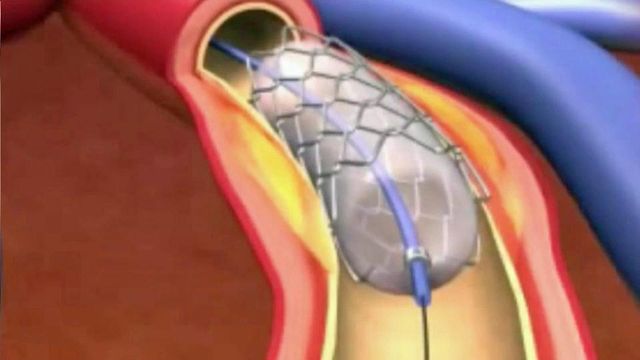Robotic device makes heart valve surgery easier
Duke University Hospital is one of the few to use a device like a drill in a heavily calcified artery to open it up.
Posted — UpdatedDr. Allen Cato, 74, is co-founder of Cato Research, a drug research and development company.
But drugs alone could not address his health issues, which included a leaking heart valve. That had to come second to fixing another problem in one heart artery.
“We were all stunned to find I had 80 to 90 percent blockage,” Cato said.
“One of his needs was not to have a big invasive surgical procedure that was going to set him back for many months,” said Dr. Christopher O’Connor, director of the Duke Heart Center.
Interventional cardiologist Dr. Manesh Patel said an orbital athrectomy device works like a drill in a heavily calcified artery. With a catheter threaded through a leg artery to the heart, a diamond encrusted burr does the work.
“It's off-center a little bit, so when it spins, it uses centrifugal force to open up and ‘sand’ the artery,” Patel said.
Cato said the process of removing calcium seemed better that “just trying to squash it up against the vessel wall.”
Patel said Cato could undergo the minimally invasive surgery 30 days after having metal stents placed in the area.
• Credits
Copyright 2024 by Capitol Broadcasting Company. All rights reserved. This material may not be published, broadcast, rewritten or redistributed.





